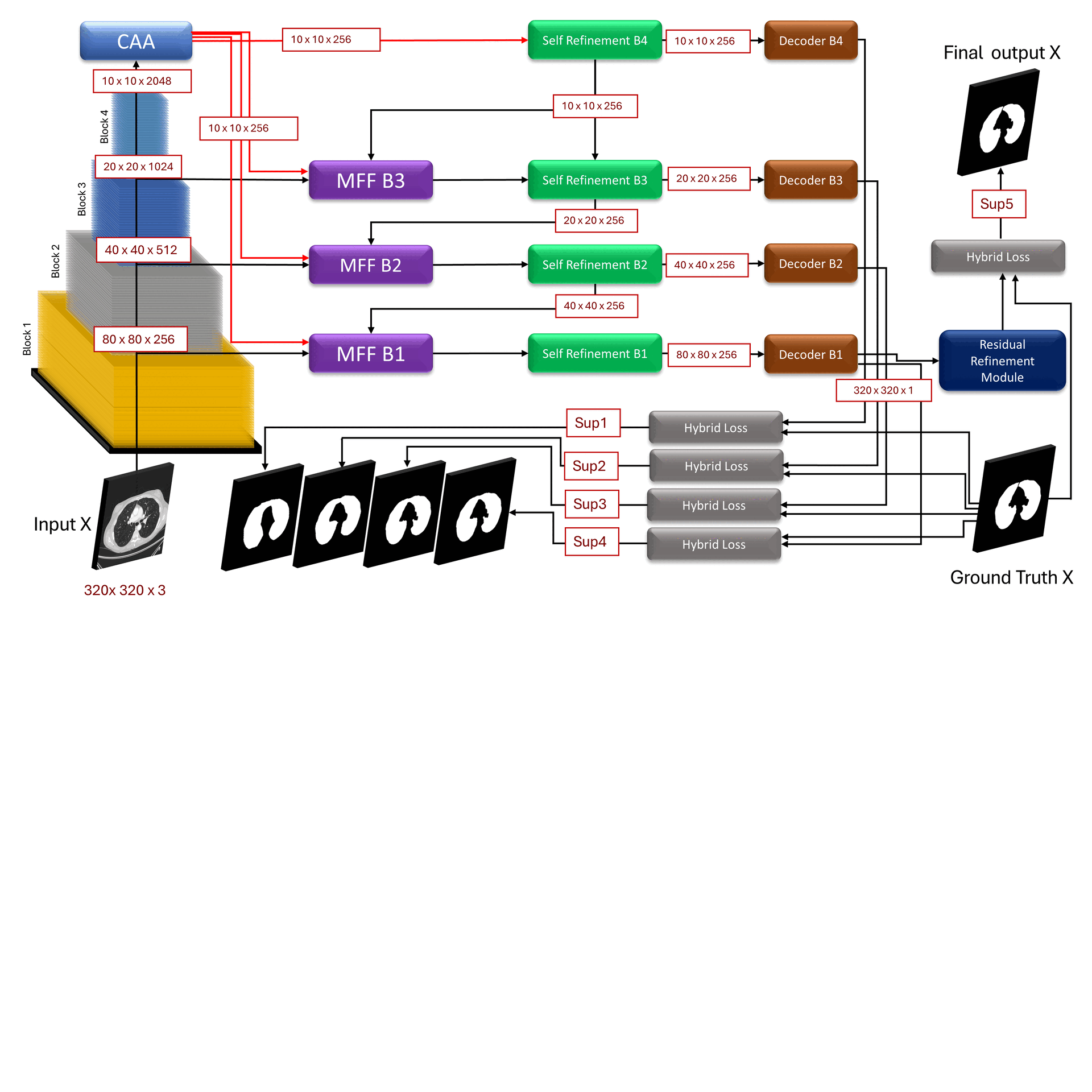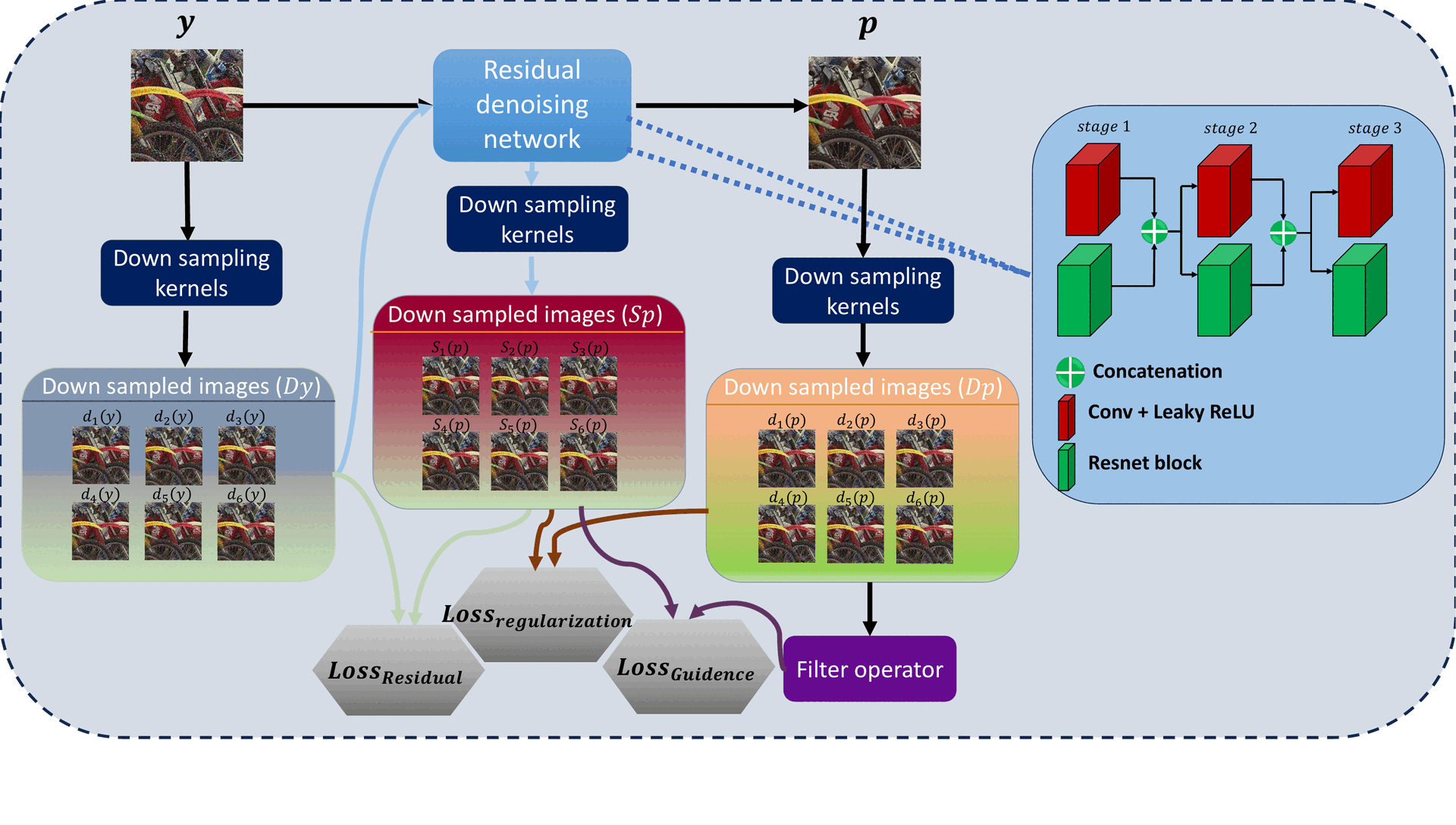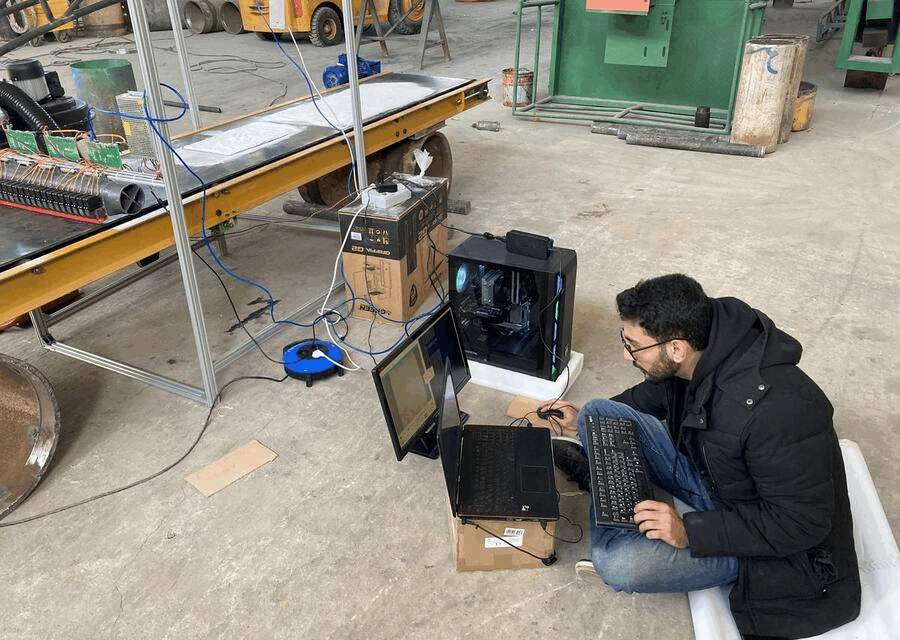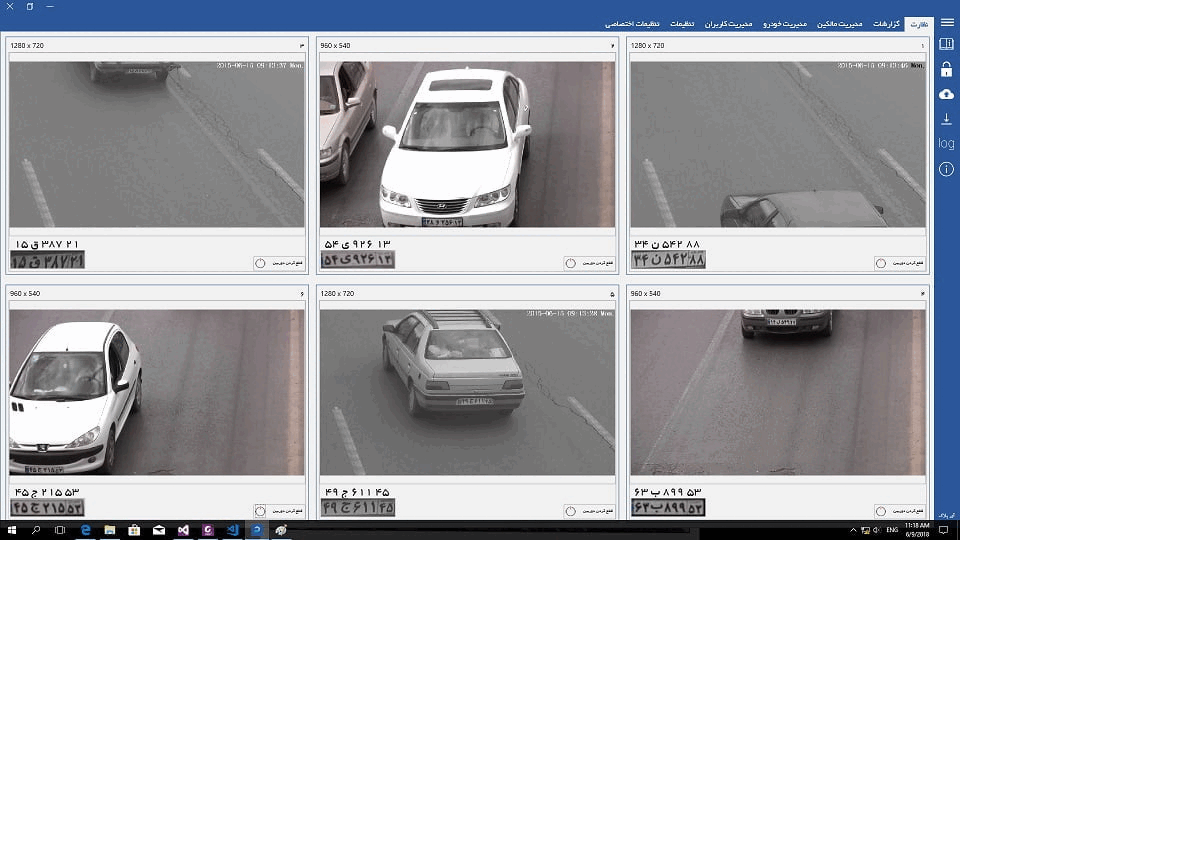 | FusionLungNet: Multi-scale fusion convolution with refinement network for lung CT image segmentation
[Paper] [code]
Early detection of lung cancer relies on accurate lung image segmentation, but this is challenging due to overlapping structures and complex features. We propose FusionLungNet, a hybrid approach that combines advanced techniques like ResNet-50, Channel-wise Aggregation Attention, and Multi-scale Feature Fusion to enhance segmentation accuracy. Our method, optimized with multiple loss functions, outperforms existing models with an IOU score of 98.04. We also introduce LungSegDB, a new dataset for lung segmentation with 2,500 CT images, improving the quality and reliability of lung disease detection. #Segmentation #Medical Imaging #Dataset
Python Pytorch |  | Single Image Denoising via a New Lightweight Learning-Based Model
[Paper] [code]
Restoring high-quality images from noisy versions is a key challenge in computer vision, especially with large, high-resolution images. Traditional deep learning models for image denoising often require paired clean/noisy images, limiting their real-world applicability. To address this, we propose a Fast Residual Denoising Framework (FRDF) based on zero-shot learning, which doesn't rely on paired data. Our method uses a novel downsampling technique to generate multiple versions of the noisy image, which are processed by a lightweight residual network. The network incorporates a hybrid loss function for high-quality denoising. Extensive experiments on synthetic and real images show that our approach outperforms existing methods, achieving up to 2 dB improvement in PSNR on the McMaster and Kodak24 datasets. This makes FRDF ideal for scenarios with limited data and resources. #Zero-Shot #Image Denoising
Python Pytorch |  | MFSD: Masked Face Segmentation Dataset
sadjad rezvani, Mansoor Fateh, Hossein Khosravi
[paper] [Access dataset]
As an integral component of my master's thesis, I undertook the preprocessing stage, which necessitated the utilization of binary mask region images. This was a prerequisite for the subsequent training of a dedicated neural network designed to fulfill this task efficiently. However, the availability of an appropriate dataset for network training was a preliminary concern. Existing masked face datasets are not procedure binary segmentation maps because Segmenting mask regions manually is a time-consuming operation. In response to this challenge, I contributed to the creation of the Masked Face Segmentation Dataset (MFSD),which addresses the dearth of suitable training data for mask segmentation tasks. This pioneering dataset encompasses a comprehensive collection of 11,601 images, each featuring 12,758 accurately masked faces. This endeavor seeks to alleviate the obstacles associated with mask region segmentation by providing a valuable resource for researchers in this domain. #python-crawler #Selenium #BeautifulSoup #masked face detection #labelme tool
Python |  | ABANet: Attention Boundary-Aware Network for image segmentation
Sadjad Rezvani, Mansoor Fateh, Hossein Khosravi
[paper] [code]
In this article, we suggested an ABANet architecture with a hybrid loss for mask face segmentation. Firstly, we adopted an attention gate in skip connections to capture more specific information. Experimental results show that ABANet can obtain superior segmentation performance by adding a series of AG modules to the skip connections. In addition, the hybrid loss is utilized to evaluate training at the pixel, patch, and map levels, maintaining training stability and adjusting to unbalanced positive and negative sample distributions. #U-Net #Attention Gate #Refinement Network #Hybrid Loss
Python Pytorch |  | Salt Crack Sorting Machine
Sadjad Rezvani, Shahaab-Co This was an industrial project that was implemented in 2021 at a salt factory. The objective of this project was the purification of impurities from salt. The project is generally composed of two phases: software and hardware. In the software phase, the task of detecting impurities was accomplished using image processing, while in the hardware phase, operations of suction and removal of impurities were carried out using servo motors and a blower. I was responsible for the software part of this work, which was successfully completed. # Blob Detection
C++ OpenCV C# |  | Ipelak(Plate Recognition Software)
Sadjad Rezvani, Shahaab-Co Since 2019, when I joined Shahaab Company, along with several colleagues, we embarked on developing license plate recognition software. The company had been working on the license plate recognition library(satpa) in previous years. After several months of development, the software was created and made available for sale on the website. In this project, my responsibility was database design and maintaining the entire back end of an application. Currently, this software stands as one of the most comprehensive and well-known license plate recognition solutions in Iran. To familiarize yourself with the capabilities of this software, you can visit the Shahaab Company website. C# sql wpf | [Web Cite] |